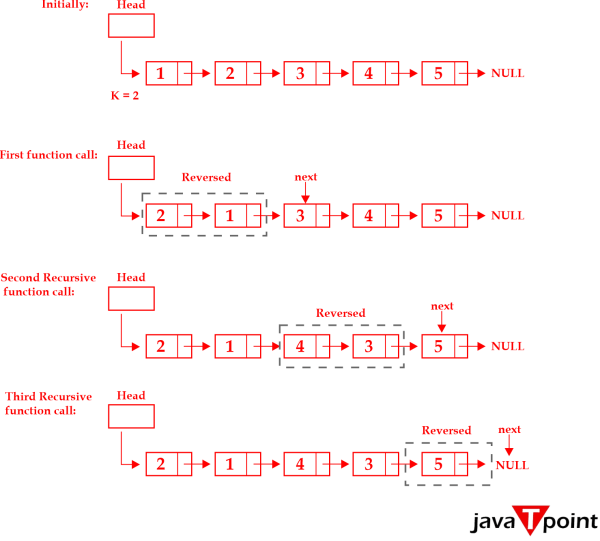DS Tutorial
DS Array
DS Linked List
DS Stack
DS Queue
DS Tree
DS Graph
DS Searching
DS Sorting
Differences
Misc
DS MCQ
Reverse a Linked List in Groups of Given SizeCreate a function that would reverse every t nodes in a linked list (where t is an input to the function). Example: Algorithm: reverse(head, t)
The illustration below displays how the reverse process is functioning: 
The given technique is implemented as follows: C Program: Output: Given linked list 11 12 13 14 15 16 17 18 19 Reversed Linked list 13 12 11 16 15 14 19 18 17 Analysis of Complexity:
The list is traversed just once, and it contains 'n' elements.
During the recursion, calls will be performed for each Linked List of size n, n/t, or (n/t)+1. This problem can be solved in O(1) Space Complexity. Approach - 2 (Space Optimization - Iterative)This Algorithm necessitates the following steps:
The code for the aforementioned algorithm is provided below. C Program: C++ Program: Output: Given linked list 11 12 13 14 15 16 17 18 19 Reversed Linked list 13 12 11 16 15 14 19 18 17 Analysis of Complexity:
The while loop consumes O(N/t) time, whereas the inner for loop consumes O(t) time.
There is no extra space used. |
 For Videos Join Our Youtube Channel: Join Now
For Videos Join Our Youtube Channel: Join Now
Feedback
- Send your Feedback to [email protected]
Help Others, Please Share










